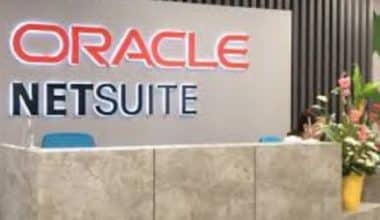Team building exercises are now an essential part of corporate culture. In today’s world, having a culture of teamwork within the organization is the first and most important requirement for a business to thrive. When all of the employees work together and in unison, we can say that the company is on the right track. But what exact are team building exercises?
Simply put, team building exercises are activities that are designed to promote cooperation and strengthen interpersonal relationships. The results of these activities include reduced workplace conflict and increased employee satisfaction.
So, to help you strengthen your team’s collaboration by increasing trust and confidence in one another, I’ve compiled a list of the best team-building exercises. In the long run, these activities will teach your employees skills that they can apply in both their professional and personal lives.
Team Building Exercises to Break the Ice
Icebreakers are great team-building exercises for new employees. They aid recruits in adjusting to the workplace.
These activities are a fun way to welcome new employees into an unfamiliar environment. They include:
Two truths and a Lie
New employees may struggle to navigate the office’s various personalities. Companies can organize a game of two truths and a lie to ease employees into these interactions.
Participants in this game must share two true events and one lie. This can happen during a scheduled break or at lunchtime.
Each person in the group presents the truths and lies. The listeners must then guess whether something is true or false.
Two Truths and a Lie is a simple game that can break the ice between coworkers and a new colleague. They encourage colleagues to get personal, resulting in an easy bond.
The One-word Icebreaker Game
This game provides an informal way to learn about employee perspectives on a specific aspect of work. This could be a new policy, company culture, or even a supervisor’s methods.
A group or groups of 4-5 people are required for the one-word icebreaker game. Each group member is asked to describe a work event in one word.
Each group has a few minutes to discuss the reasons for their chosen word to have an open discussion. Following discussions, each group will select a word to be shared with the other groups.
When these words are spoken, they will spark an open discussion among the groups.
Office Trivia
A recruit may feel alienated in an unfamiliar environment. A trivia session where players answer lighthearted questions can be a pleasant surprise.
These questions can test your knowledge of the office’s preferred brand of coffee beans. Similarly, questions about colleagues who put cereal before milk are entertaining additions.
Office trivia is lighthearted, with more serious questions saved for appropriate scenarios. The goal is to make the office a welcoming environment for new employees.
A Penny for Your Thoughts
This game puts a unique spin on icebreakers. It requires pennies or coins from the specified years and a container to store them in.
Members of the group will reach into the container with the coins and identify the year inscribed. The colleague will then relate a personal experience from that period.
This activity has the potential to strengthen bonds between teammates. When colleagues learn personal facts about team members, they form relationships.
What Do We Have in Common?
Personal employee engagement can be challenging in large organizations. A simple exercise can improve relations between departments and personnel who rarely interact.
The common game can be played in person or as a virtual team-building exercise. During a company lunch or a Zoom call, members from various groups are assigned to units.
Members of these units must discover 5-10 things they have in common.
It could be a shared love of classical music or a favorite pizza flavor. Effective probing is done to learn about shared experiences. This will put pressure on colleagues to learn a lot of information in a short amount of time.
Whodunit
This game provides valuable insight into the extracurricular activities that teammates participate in. Whodunit requires a small group to write one interesting thing they’ve done on a note. These include activities such as being a previous winner of a food-eating competition, skydiving, etc.
This note is then placed in a container from which other group members can choose.
Teammates must guess which colleague best fits the description of the selected note. They will explain why, sparking debate about whether this is correct or incorrect.
Lost on a Desert Island
Team members of all ages can benefit from learning more about their coworkers. This game’s plot revolves around players stranded on a deserted island.
They discuss one item they would bring along with them and why.
This gives coworkers an intimate look at objects and feelings that group members treasure.
Team Building Exercises for Teamwork
Activities that promote teamwork boost elements that ensure a healthy team. Team members learn the importance of communication and collaboration through the use of appropriate exercises. When completing tasks, colleagues can build trust.
The Marshmallow Test
Each team is given 20 sticks of spaghetti, one marshmallow, as well as one yard of string and tape.
Each team is to construct the tallest freestanding structure possible using these materials.
Colleagues are pushed to collaborate on a fun, creative task. While this activity is relaxed, members learn the powerful effects of collaboration.
The winner is determined using a measuring tape when the structures are completed.
Frostbite
This game will necessitate the presence of a team leader and subordinates. Sticky notes or post-its, toothpicks, thick cardboard boxes, and a fan are also required.
Participants pretend to be in the Arctic, ignoring the office or other surroundings. They are being led through an Arctic exhibition for them to survive. Team members must construct a shelter for their survival. Teammates elect a leader to guide them through this activity in a democratic setting.
The team leader will provide instructions on how to construct this structure. He is unable to participate due to frostbite sustained on the journey. Team members construct the structure while following the leader’s verbal instructions while blindfolded.
This task will teach supervisory and instruction-taking abilities. Members also learn the importance of time management while performing tasks.
Human Knot
This game is great for large groups and can push people out of their comfort zones. Team members join their right and left hands in a circle with the person opposite them. Teammates are not permitted to hold hands with the person next to them.
When all members’ hands are tangled in a knot, the game requires them to untangle it without releasing their hands. To be successful, communication and careful instruction are required.
The first team to form a perfect circle with their hands joined wins.
Gutterball
In this game, team members must move a ball from one end of the room to the other. This game can be made more difficult by incorporating obstacles throughout the game.
The Egg Drop
The egg drop is a fun activity that can be used to assess how well team members collaborate. Teammates use various materials to construct a structure to support a falling egg.
The team that creates a surface strong enough to withstand the fragile egg drop wins. It is, however, critical that each participant feels like a winner. Team members can discuss the task’s collaborative skills.
Scavenger Hunt
A scavenger hunt is an great way for experienced and new employees to explore the company (or conference room). When hunts are well executed, the physical and factual aspects of the office can be understood.
Colleagues search the office for hidden facts and questions to help build teams.
This is feasible with a single team of coworkers. Groups or departments in larger organizations may compete with one another.
Birthday Lineup
This game will begin with groups of 8-15 people standing next to each other. They will be re-shuffled by their birthdates once they are in a file. Team members are organized by months and days.
This should, however, be communicated without speaking. The game is played by interacting with signs and symbols. By the end of the exercise, the entire group should be standing in the order of their birthdays.
This exercise demonstrates how well teammates can collaborate on tasks.
Perfect Square
Team members form a circle around a rope in groups of six. To begin the game, they are blindfolded.
The members will then communicate in various ways to form a square.
This will provide practice in effective collegue interaction.
Play Board Games or Puzzles
Office board games and jigsaw puzzles add a fun twist to collaboration. There are numerous work puzzles, strategy games, and icebreaker games for colleagues to try. Board games are typically intended for smaller groups. If you have a large group, you may need to play multiple games, divide the team into smaller groups, or get creative with the rules.
Team Building Exercises to Increase Creativity.
Creativity can take many forms. Any activity encouraging people to think outside the box will spark their creative minds. These games require skills in communication, collaboration, and problem-solving.
Classify This
This is an opportunity for team members to think creatively about tasks. Various objects are grouped. These could be items found around the office. Coffee supplies, paperweights, water bottles, and other items will suffice. When playing, approximately 20 objects are used.
Team members will classify the objects into a group that links them all in groups of twos or fours. In each item, the groups look for common denominators.
Each group chooses a speaker to explain why each cluster was chosen.
Salt and Pepper
This game is played in groups of two. Each group is designated as a pair, for example, macaroni and cheese, water and oil, or peanut butter and jelly. Every member of the group will have one name taped to his back.
Each player will ask five yes or no questions to determine what is written. The pairs will then come across each other.
Sales Pitch
Through a sales pitch, team members can engage in quick thinking. This exercise follows each individual as they choose one item from the office. They’ll spend the next 15 minutes developing a sales pitch to promote it.
Each object will have a unique name, logo, and motto. They’ll also give a whiteboard presentation explaining why people should buy fountain pens, sheets of paper, or office pins.
A Compliment Circle
Regular recognition can help to build and strengthen a team. Team members acknowledge the efforts of their colleagues while gathered in a circle. It can range from gratitude for being a listening ear to efficiency in deliverables.
Strategic Team-Building Exercises
These exercises demonstrate how each individual perceives the workplace. Strategic exercises in the office focus on brand identity. Employees discuss their perspectives on the company’s goals.
Company Concentration
This game is a more professional version of Concentration. Cards with colleagues’ names and images can be made. Cards may also include company information such as the logo, mission statement, motto, values, etc.
Then, each player chooses two cards to see if they match—the player who matches the cards the fastest wins.
Minefield
Around 20 small objects are required to play this game. This could range from lunchboxes to coffee mugs. A seeing partner will lead one blindfolded person in pairs of two. They must navigate the obstacle course while communicating clearly.
All the News
This game gets team members excited about upcoming goals. Team members in a department share headlines of potential feats in groups of 3-6.
These headlines are distributed in the same manner as a newspaper article. The measures required to achieve this are reviewed as a unit or through a spokesperson.
Both in-office employees and members of remote teams could play this.
Slideshow
Team members can choose any topic they want. Each idea is analyzed and presented in specific groups. This demonstrates that team members can collaborate even when they are not performing routine tasks.
Slideshow exercises can also help you improve your presentation skills.
Shrinking Vessel
Small teams will benefit from the shrinking vessel. The concept is that players are on a sinking ship and must huddle close together. Members are placed within a rope-delimited area. The game necessitates tightening the boundary. To stay within the boundaries, members must be creative and athletic.
Memory Wall
The memory wall is made up of key events that team members witnessed. Team members recall information written on a sticky note or on a whiteboard.
Guess Who?
Team members are divided into groups and led by a moderator. Each group will decide who may be knocking on their door based on clues provided by the coordinator.
The person knocking could be a representative of the described company. Members of the team may also decode celebrity personalities.
Related Articles
- LONG TERM BUSINESS LOAN: How To Get One
- Naked Call: Definition, How to Use it (+ A Better Approach)
- FAKE RESUME: How To Generate Fake Resume
- Problem Solving Skills: Examples on How to Demonstrate them
- Double Entry Bookkeeping: Simplified With UK Practices and Examples






